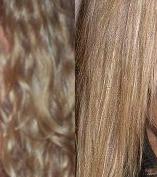Remington Products
Remington Products, commonly known as simply Remington, is a worldwide personal care corporation which manufactures razors (shavers), epilators, and haircare products for both men and women. It is a subsidiary of Spectrum Brands.
History
The origins of the "Remington" name date back to the formation of E. Remington and Sons, a firearms maker founded in 1816. E. Remington & Sons made occasional forays into products other than firearms, such as sewing machines and farm implements — but its most significant side venture was when inventor Christopher Sholes persuaded the firearms company to help him develop the typewriter with the QWERTY keyboard, which is still the standard today. In 1886, E. Remington & Sons sold the typewriter company, which became Remington Typewriter Company. This in turn merged with the Rand Kardex Corporation in 1927 to become Remington Rand. Remington Rand branched out into making adding machines, filing cabinets, punched card tabulating machines, and other office equipment to become a leading office equipment company.
The origin of Remington personal care products dates back to 1937 when Remington Rand began to branch out to electric shavers, starting with the Remington Model E.
In 1950, Remington Rand bought the pioneering Eckert-Mauchly Computer Company. In 1955, it merged with Sperry Corporation, developer of the automatic pilot, amongst other devices. The combined company became the Sperry Rand Corporation and continued to market shavers under the Remington brand. In 1979, Sperry Rand sold off a number of its divisions, including the consumer products. Victor Kiam bought the electric shaver company in a leveraged buyout.
Victor Kiam's
Remington Products Company became very profitable, branching out into other personal care
small appliances, buying
Clairol's personal care appliance business in 1994. Kiam sold
controlling interest in Remington to
Ike Perlmutter prior to the Clairol
acquisition that same year. Remington changed hands again on June 1996 when Perlmutter and Kiam sold controlling interest in the company to
Vestar Capital Partners. Victor Kiam died in 2001. In 2003, the Kiam family and Vestar sold Remington to the
battery company
Rayovac. Rayovac changed its name to
Spectrum Brands and
markets Remington brand men's and women's electric shavers,
hair clippers,
beard and
moustache trimmers, nose and ear hair trimmers,
foot massagers,
make-up mirrors, heated hair rollers,
blow dryers, and
curling irons. Remington also sells
flat irons






